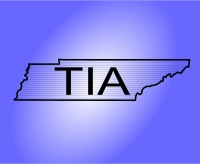A to Z of Inventing: A program for 2010
The TIA is sponsoring a new program in 2010. The program is A to Z of Inventing. We will be following an idea from conception through commercialization. We will focus on the various steps and different aspects of the process.
The first thing every inventor does is come up with an idea. There may be some problem that needs to be solved. Something may just aggravate the inventor. Where ever it springs from, every invention starts with an idea. The idea grows, often like a fast growing plant. The inventor, like a master gardener, nurtures the idea and develops it into something that works, something that really solves a problem.
It is not enough for the inventor to solve the inventor's own problem. The inventor would like his invention to solve the same problem for everyone. And, of course, it would be nice to be rewarded for solving everyone's problem.
The A to Z of Inventing program starts with an idea. Actually, we hope to have many ideas from different inventors. The more ideas, the better. As Louis Foreman, our August 2009 TIA speaker said, "Fail early and fail often." Lots of ideas are needed so that, after being considered for feasibility, the ones most likely to be profitable can be selected for further consideration.
The first step after having an idea is to determine if it is commercially feasible. Louis Foreman discussed what makes ideas feasible. His book, which he sold when he spoke last August, contains valuable information. Louis says following factors should be considered, in order:
- What is the product? What is the feature that is being sold?
- Who is the customer? What type of person will buy the product?
- How will the customer react to the product? Is there a real need for the product and will customers buy it?
- How much money is needed for startup and for operational costs? These costs will vary depending upon if the product is to be licensed (a patent will be needed in that case) or if the product will be manufactured, distributed, and marketed under control of the inventor.
- Where will the money come from?
If the idea is feasible, the next step is to develop the idea into an actual product to determine if it is technically feasible. Build a prototype and test it. Improve it and test it again.
Another step is to prepare a business plan. A business plan is nothing other than a document that includes the information from the first step of determining commercial feasibility. The business plan is a living document for recording detailed information (the data) and steps for verifying and acting on that data.
Another step is to follow the business plan. For example, the first step above is to consider who is the customer and how will that customer react to the product. In the business plan, these two factors are aspects of a market analysis. A market analysis needs to be performed in order to verify our initial assumptions.
Throughout 2010 the TIA meetings will address the steps above through workshops and presentations. As we consider the above steps and their various aspects, we will bring in speakers to provide additional insight.
2010 is going to be a great year. I hope everyone is able to join us for the ride.
- Tom Kulaga's blog
- Login to post comments


